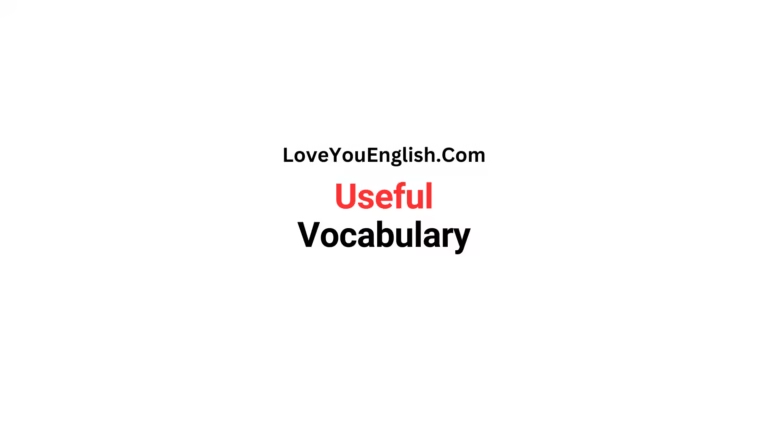Words to use instead of SAID
Sharing is caring!
Writers often struggle with making their dialogue lively and interesting.
One important part of creating great conversations is using dialogue tags, which are phrases that show who is speaking.
While “said” is a dependable choice, using it all the time can make writing feel dull and repetitive.
In this post, I will tell you about many options for dialogue tags that can help make your conversations more exciting and improve your storytelling.
Why Using Different Dialogue Tags Matters
Before we jump into our long list of alternatives, let’s think about why it’s important to mix up our dialogue tags:
a) Building Characters: Different tags can show how a character feels, their attitude, and their personality.
b) Setting the Mood: The right tag can help create the atmosphere of a scene.
c) Controlling the Pace: Using various tags can change the speed and flow of the dialogue.
d) Keeping It Fresh: A variety of tags keeps readers interested and stops the writing from feeling repetitive.
e) Show, Don’t Tell: Descriptive tags can give hints about the scene and what the characters are doing without breaking up the dialogue.
2- Emotion-Based Alternatives
One of the most effective ways to replace “said” is by using words that convey the speaker’s emotional state:
- Whispered: For secretive or intimate moments
- Shouted: To express anger or urgency
- Mumbled: When a character is unsure or reluctant
- Growled: To show aggression or frustration
- Squealed: For excitement or surprise
- Sobbed: To express deep sadness or distress
- Chuckled: For mild amusement
- Sighed: To convey resignation or weariness
- Snapped: For irritation or impatience
- Gushed: To show enthusiasm or admiration
Example: “I can’t believe we won!” Sarah squealed, jumping up and down. “Neither can I,” John mumbled, his eyes fixed on the ground.
3- Volume-Based Alternatives
Sometimes, it’s important to indicate how loudly or softly a character is speaking:
- Bellowed: For very loud, often angry speech
- Roared: Similar to bellowed, but with more force
- Yelled: A common alternative for loud speech
- Called: For raised voices, often across a distance
- Murmured: For very soft speech
- Muttered: Similar to murmured, but often implies discontent
- Hissed: For angry whispers
- Breathed: For extremely soft, often awe-struck speech
Example: “Get out of my house!” he bellowed, his face turning red. “But I thought we were friends,” she breathed, taking a step back.
4- Speed-Based Alternatives
The pace at which a character speaks can add significant meaning to their words:
- Blurted: For sudden, often unintentional speech
- Rambled: When a character speaks at length without focus
- Rattled off: For quick, often rehearsed speech
- Drawled: For slow, drawn-out speech
- Sputtered: When a character struggles to get words out
- Babbled: For rapid, often nonsensical speech
Example: “I didn’t mean to!” Tom blurted, his eyes wide with panic. “Well, well, well,” the sheriff drawled, “what do we have here?”
5- Action-Based Alternatives
Combining speech with action can create vivid, dynamic scenes:
- Laughed: When speech is accompanied by laughter
- Coughed: Often used for interruptions or to show discomfort
- Smiled: To indicate a pleasant tone
- Frowned: To show disapproval or concentration
- Shrugged: Often used with nonchalant or uncertain speech
- Nodded: To show agreement along with speech
- Gestured: When speech is accompanied by hand movements
- Winked: For playful or conspiratorial speech
Example: “I suppose we could give it a try,” she shrugged, reaching for the door handle. “Trust me, it’ll be fun,” he winked, leading the way.
6- Descriptive Verbs
Sometimes, a more specific verb can replace “said” and add depth to the dialogue:
- Explained: For providing information or clarification
- Argued: When characters disagree
- Insisted: For emphatic statements
- Remarked: For casual observations
- Confessed: When revealing secrets or admitting fault
- Demanded: For forceful requests or questions
- Suggested: For offering ideas or solutions
- Interrupted: When a character cuts into another’s speech
- Continued: For picking up after a pause
- Concluded: For wrapping up a longer speech
Example: “The solution is quite simple,” he explained, drawing a diagram on the board. “But that won’t work!” she interrupted, pointing out a flaw in his logic.
7- Adverbs with “Said”
While it’s generally advisable to use strong verbs instead of adverbs, sometimes a carefully chosen adverb can effectively modify “said”:
- Said softly
- Said firmly
- Said quickly
- Said slowly
- Said angrily
- Said happily
- Said sarcastically
- Said thoughtfully
- Said nervously
- Said confidently
Example: “I’m not sure about this,” he said nervously, fidgeting with his tie. “Everything will be fine,” she said confidently, striding towards the stage.
8- Phrases Instead of Single Words
Sometimes, a short phrase can replace a dialogue tag entirely, providing context and action:
- His voice trailed off
- She raised an eyebrow
- He threw his hands up
- She leaned in close
- He rolled his eyes
- She bit her lip
- He crossed his arms
- She tapped her foot impatiently
Example: “I never meant to—” His voice trailed off as he saw the hurt in her eyes. “Oh, really?” She raised an eyebrow, clearly unconvinced.
9- Using No Dialogue Tags
In some cases, especially in rapid exchanges between two characters, you can omit dialogue tags entirely.
This technique can create a sense of quick, snappy dialogue:
“Did you hear that?” “Hear what?” “That noise. Like footsteps.” “I didn’t hear anything.” “There it is again!” “You’re imagining things.”
10- Industry-Specific Alternatives
Depending on the setting of your story, you might use dialogue tags specific to certain professions or contexts:
- Reported: For journalists or in formal settings
- Testified: In legal contexts
- Diagnosed: For medical professionals
- Lectured: In educational settings
- Preached: For religious contexts
- Pitched: In business or sales contexts
- Commanded: In military settings
- Announced: For formal declarations
Example: “The patient is showing signs of improvement,” the doctor diagnosed, reviewing the chart. “Attention on deck!” the captain commanded as he entered the room.
11- Onomatopoeic Alternatives
Words that mimic sounds can sometimes serve as effective dialogue tags:
- Huffed
- Puffed
- Grunted
- Groaned
- Squeaked
- Barked
- Chirped
- Hissed
- Purred
- Yelped
Example: “I can’t believe you did that,” she huffed, crossing her arms. “Sorry,” he squeaked, shrinking under her glare.
12- Metaphorical Alternatives
Sometimes, a metaphorical tag can add color and imagery to your dialogue:
- Thundered: For angry, loud speech
- Bubbled: For cheerful, effervescent speech
- Oozed: For speech dripping with a particular quality (often sarcasm)
- Exploded: For sudden, violent outbursts
- Flowed: For smooth, effortless speech
- Froze: For cold, emotionless delivery
Example: “How dare you!” he thundered, his words shaking the room. “Oh, I’m so happy for you,” she oozed, her voice dripping with sarcasm.
13- Character-Specific Tags
Developing unique dialogue tags for specific characters can help define their personalities:
- For a chatty character: Chattered, Prattled, Gabbed
- For a wise character: Mused, Pondered, Reflected
- For a nervous character: Stammered, Stuttered, Faltered
- For a loud character: Boomed, Proclaimed, Declared
- For a quiet character: Whispered, Breathed, Murmured
Example: “Well, you see, it’s quite simple really,” the professor mused, stroking his beard thoughtfully. “I-I’m not s-sure about this,” Tim stammered, his hands shaking slightly.
14- Context-Specific Alternatives
The situation or environment can inspire unique dialogue tags:
- In a noisy environment: Shouted over the din, Called above the noise
- In a tense situation: Hissed under their breath, Muttered through clenched teeth
- In a romantic scene: Breathed against her ear, Murmured softly
- In a confrontation: Spat the words, Hurled the accusation
- In a secretive exchange: Whispered behind their hand, Mumbled out of the corner of their mouth
Example: “We need to get out of here,” he hissed under his breath, eyeing the guards nervously. “I love you,” she breathed against his ear, sending shivers down his spine.
Common Mistakes to Watch Out For
When trying out different tags instead of “said,” be careful of these common errors:
a) Using too many dramatic tags: Not every line needs a super emotional or exciting tag.
b) Picking impossible actions: Be cautious with tags like “laughed” or “smiled” because you can’t really talk while doing those things.
c) Overloading on adverbs: While they can be helpful sometimes, using too many can make your writing weaker.
d) Thesaurus overkill: Don’t pick fancy or hard-to-understand words just to sound different.
e) Mixing up the tone: Make sure your dialogue tags fit the overall feel of your scene and story.
Conclusion:
Learning how to use dialogue tags well is super important for any writer.
While “said” is always useful, having a variety of other options can really make your conversations more interesting and emotional.
The key is not to get rid of “said” completely, but to use it wisely along with other tags that can make your story even better.
By mixing up your dialogue tags, you can change the speed of the story, show what kind of person a character is, set the mood for a scene, and keep your readers interested.
Just remember to keep your writing clear and natural.
The best conversations feel easy and flow well, with tags that help rather than take away from what the characters are saying.
As you keep improving your writing, try out different kinds of dialogue tags.
Look at how great authors use them in the books you love.
With practice, you’ll get a good feel for when to use “said” and when to pick a more colorful option.
Always remember, your own unique voice is the strongest tool you have in writing.
Use these different tags as a starting point, but don’t hesitate to create your own style and come up with tags that fit your characters and stories perfectly.
Enjoy writing!
More topics:
- Fun Ways to Learn to Read and Write
- Let’s Talk About Culture: Vocabulary & Phrases
- How To Use Podcasts To Learn English
- Most Popular TV Shows to Watch
- Writing a Compelling Email for Networking
- Crafting the Perfect Thank You Email
- How to Write a Cold Email That Gets Responses
- Tips for Writing Emails to Clients
- How to Write a Simple Email in English
Sharing is caring!







